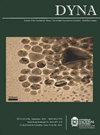Classification of COVID-19 associated symptomatology using machine learning
Q3 Engineering
引用次数: 0
Abstract
The health situation caused by the SARS-Cov2 coronavirus, posed major challenges for the scientific community. Advances in artificial intelligence are a very useful resource, but it is important to determine which symptoms presented by positive cases of infection are the best predictors. A machine learning approach was used with data from 5,434 people, with eleven symptoms: breathing problems, dry cough, sore throat, running nose, history of asthma, chronic lung, headache, heart disease, hypertension, diabetes, and fever. Based on public data from Kaggle with WHO standardized symptoms. A model was developed to detect COVID-19 positive cases using a simple machine learning model. The results of 4 loss functions and by SHAP values, were compared. The best loss function was Binary Cross Entropy, with a single hidden layer configuration with 10 neurons, achieving an F1 score of 0.98 and the model was rated with an area under the curve of 0.99 aucROC.使用机器学习对COVID-19相关症状进行分类
SARS-Cov2冠状病毒造成的卫生状况给科学界带来了重大挑战。人工智能的进步是一个非常有用的资源,但重要的是要确定阳性感染病例所呈现的哪些症状是最好的预测因素。机器学习方法用于处理5434人的数据,这些人有11种症状:呼吸问题、干咳、喉咙痛、流鼻涕、哮喘史、慢性肺病、头痛、心脏病、高血压、糖尿病和发烧。根据世卫组织标准化症状的Kaggle公开数据。利用简单的机器学习模型开发了检测COVID-19阳性病例的模型。将4种损失函数的结果与SHAP值进行比较。最佳损失函数为二元交叉熵,单隐层配置10个神经元,F1得分为0.98,曲线下面积为0.99 aucROC。
本文章由计算机程序翻译,如有差异,请以英文原文为准。
求助全文
约1分钟内获得全文
求助全文
来源期刊

Dyna-Colombia
工程技术-工程:综合
CiteScore
1.30
自引率
0.00%
发文量
0
审稿时长
4-8 weeks
期刊介绍:
The DYNA journal, consistent with the aim of disseminating research in engineering, covers all disciplines within the large area of Engineering and Technology (OECD), through research articles, case studies and review articles resulting from work of national and international researchers.
 求助内容:
求助内容: 应助结果提醒方式:
应助结果提醒方式:


